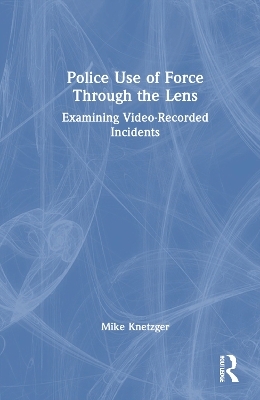
Police Use of Force Through the Lens
Routledge (Verlag)
978-1-032-88621-3 (ISBN)
- Noch nicht erschienen (ca. Februar 2025)
- Versandkostenfrei
- Auch auf Rechnung
- Artikel merken
Supported with academic sources along with practical examples that connect academics to the real world, the book educates readers about the history of cameras in law enforcement, significant events that influenced the proliferation of cameras in law enforcement, how use-of-force incidents are evaluated, how camera factors influence perceptions, and how human factors can impact how officers perceive and recall what occurred during use-of-force incidents.
A thorough discussion of the benefits and disadvantages of cameras—including how camera perspectives can be misleading and incomplete—challenges the presumption of the objectiveness of video and posits a systematic framework to help evaluators or viewers of video-recorded use-of-force incidents arrive at more objective conclusions.
Mike Knetzger served as a Wisconsin law enforcement officer for nearly 30-years and retired in 2022 as a patrol sergeant with the Green Bay Police Department (GBPD). Knetzger has earned a doctoral degree in criminal justice management (Colorado Technical University), a master’s degree in public administration (University of Wisconsin – Oshkosh), a bachelor’s degree in justice and public policy (Concordia University – Wisconsin), and an associate degree in police science (Waukesha County Technical College). He is a certified Department of Justice Unified Tactical Trainer/Instructor, Wisconsin Technical College Instructor, and has been teaching part-time for the past 22-years for Northeast Wisconsin Technical College (NWTC). He teaches in the criminal justice program, police academy, and on specialized law enforcement topics, and is also affiliated with doctoral-level programs at CTUonline. Knetzger has testified as an expert witness in use-of-force and standard field sobriety cases and has consulted for police chiefs, plaintiff attorneys, and other law enforcement leaders related to use-of-force, policy and procedure, and other contemporary policing issues.
Chapter 1. Objectively Reasonable Use of Force
Chapter 2. History of Video Cameras in Law Enforcement
Chapter 3. Advantages and Disadvantage of Cameras in Law Enforcement
Chapter 4. The Camera Perspective
Chapter 5. Camera Footage and Mitigating the Impact of Bias
Chapter 6. Courts and Video Recorded Use of Force
Chapter 7. Human Factors and Video Recorded Use of Force
Appendix A: Law Enforcement Human Factors Research
Appendix B: Sample Expert Witness Report
| Erscheint lt. Verlag | 27.2.2025 |
|---|---|
| Zusatzinfo | 4 Tables, black and white; 4 Line drawings, black and white; 4 Illustrations, black and white |
| Verlagsort | London |
| Sprache | englisch |
| Maße | 152 x 229 mm |
| Themenwelt | Recht / Steuern ► Strafrecht ► Kriminologie |
| Sozialwissenschaften ► Kommunikation / Medien ► Medienwissenschaft | |
| Sozialwissenschaften ► Soziologie | |
| ISBN-10 | 1-032-88621-8 / 1032886218 |
| ISBN-13 | 978-1-032-88621-3 / 9781032886213 |
| Zustand | Neuware |
| Informationen gemäß Produktsicherheitsverordnung (GPSR) | |
| Haben Sie eine Frage zum Produkt? |
aus dem Bereich


